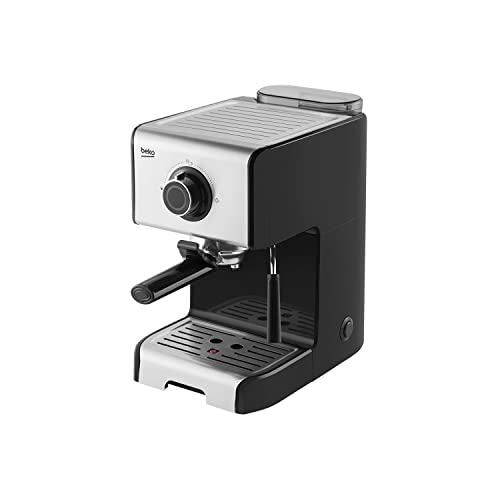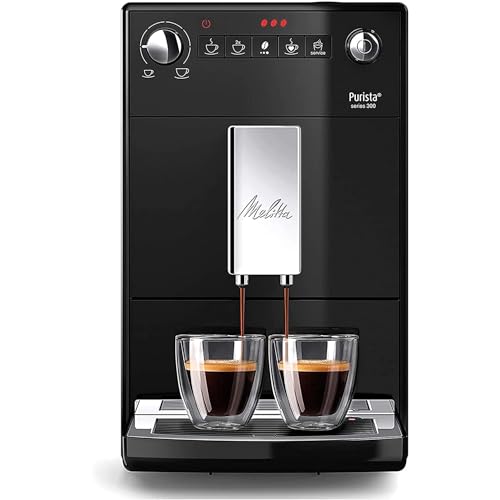Why Is Stainless Steel Espresso Machines So Famous?
페이지 정보
작성자 Lenore 작성일25-07-31 13:49 조회2회 댓글0건관련링크
본문

The Art of Italian Espresso Machines: A Brewed Tradition
Italian espresso machines are not simply devices; they are an integral part of Italy's abundant coffee culture, representing a mix of artistry, engineering, and style. Coffee fanatics around the world recognize the importance of high-quality espresso, a staple of Italian life and cuisine. This article explores the history, mechanics, types, and elements to think about when buying an Italian espresso machine, reflecting the depth of this cherished drink and its brewing methods.
History of Espresso Machines
The espresso machine's advancement dates back to the early 20th century in Italy, where coffee was not simply a drink but a necessary social routine. The preliminary attempts to brew espresso started with simple, stove-top designs, gradually developing into complex machines that could reproduce the ideal brew.
- 1901-- The First Espresso Machine: The first steam-powered espresso machine, called the "Ideale," was developed by Luigi Bezzera. This equipment marked a turning point in espresso brewing.
- 1938-- The Lever Machine: The introduction of the lever machine made it much easier to manage the pressure used in espresso extraction, improving flavor consistency.
- 1947-- The Automatic Machine: Reaching more customers, Gaggia launched the first automatic espresso machine, more promoting espresso bars.
- 2007-- The Digital Age: Technological advancements caused the birth of fully programmable machines, permitting users to personalize their developing settings to attain a customized coffee experience.
Key Features of Italian Espresso Machines
Italian espresso machines embody precision, workmanship, and development. Here are some essential components that highlight their significance:

| Feature | Description |
|---|---|
| Boiler Type | Identifies how heat is created and preserved. Typical types consist of single boiler, dual boiler, and heat exchanger. |
| Group Heads | Where the coffee is brewed; commercial machines often have numerous group heads for performance. |
| Pressure Control | Crucial for attaining the best espresso; most machines run at 9 bars of pressure. |
| Frothing Capabilities | The steam wand enables milk frothing, necessary for drinks like cappuccino and latte. |
| Develop Quality | The materials used (stainless steel, brass, etc) influence resilience and heat retention. |
Types of Italian Espresso Machines
Selecting the best machine depends upon user preferences, budget, and meant use. Below are the main types of Italian espresso machines:
Manual Espresso Machines
- Pros: Offer full control over the developing process, allowing for a tailored touch.
- Cons: Require skill and practice, can be labor-intensive.
Semi-Automatic Machines
- Pros: Provide a balance in between automatic and manual processes; users manage water circulation.
- Cons: Can have a steeper learning curve than totally automatic machines.
Completely Automatic Machines
- Pros: Simplify the brewing procedure with push-button operations; ideal for newbies.
- Cons: May compromise some of the nuances of manual developing.
Super-Automatic Machines
- Pros: Grind, tamp, brew, and froth instantly; practical for hectic lifestyles.
- Cons: Less control over the brewing variables, potential for a less authentic espresso experience.
Purchasing Guide: Factors to Consider
Choosing the ideal Italian espresso coffee Machine home machine can be complicated, however thinking about the following aspects can simplify the decision-making procedure:
- Budget: Italian espresso machines range from affordable to high-end models, so set a budget upfront.
- Usage Frequency: Evaluate how typically you will use the machine; everyday users might want a more resilient alternative.
- Space: Measure your kitchen or counter area; some machines can be large and need sufficient clearance.
- Upkeep: Consider ease of cleansing; machines with detachable parts or integrated cleansing features may decrease upkeep.
- User Skill Level: Beginners may choose fully or semi-automatic machines, while knowledgeable baristas can handle manual machines.
- Brand name Reputation: Research brands known for quality, such as Breville, Gaggia, and La Marzocco.
Popular Italian Espresso Machine Brands
Italian craftsmanship is renowned for producing some of the best espresso machines worldwide. Here are top brand names worth thinking about:
- Gaggia: Known for its home espresso machines and cost.
- La Marzocco: A premium brand name understood for its commercial-grade machines and innovative innovation.
- Rancilio: Renowned for its long lasting build and professional-quality machines suitable for home and commercial use.
- Sage/Breville: Offers advanced features and user-friendly designs, perfect for both novices and lovers.
FAQs
What is the difference in between espresso and routine coffee?
Espresso is a focused coffee brewed by requiring warm water through finely-ground coffee under pressure. It has a thicker consistency, richer flavor, and greater caffeine concentration than regular coffee.
Can I make milk-based drinks with an espresso machine?
Yes, numerous Italian espresso machines include a steam wand to froth milk for drinks like coffees, lattes, and macchiatos.
How often should I clean my espresso machine?
Regular upkeep is necessary. Normally, a comprehensive cleansing is recommended every couple of weeks, while descaling should be done every 1 to 3 months, depending on water solidity.
What is the perfect pressure for brewing espresso?
The perfect pressure for developing espresso is around 9 bars. This pressure ensures the ideal extraction of flavors from the coffee premises.
Are more pricey machines worth the financial investment?
Higher-end machines frequently make use of much better materials and technology, supplying enhanced resilience and more consistent results. For serious coffee lovers, buying a good machine can raise the espresso experience significantly.
Italian espresso machines are far more than simple developing devices; they are an event of a cultural custom that has affected coffee usage worldwide. With numerous models readily available to fit any user's needs-- varying from novices to skilled baristas-- there is an Italian espresso machine completely matched for everybody. As you start your espresso journey, comprehending the history, mechanics, and options will improve your experience and gratitude for this time-honored beverage. Whether you look for to recreate a café atmosphere in your home or fine-tune your developing strategy, these machines can delivering unforgettable cups of espresso embellished with the rich history of Italian coffee culture.
댓글목록
등록된 댓글이 없습니다.
